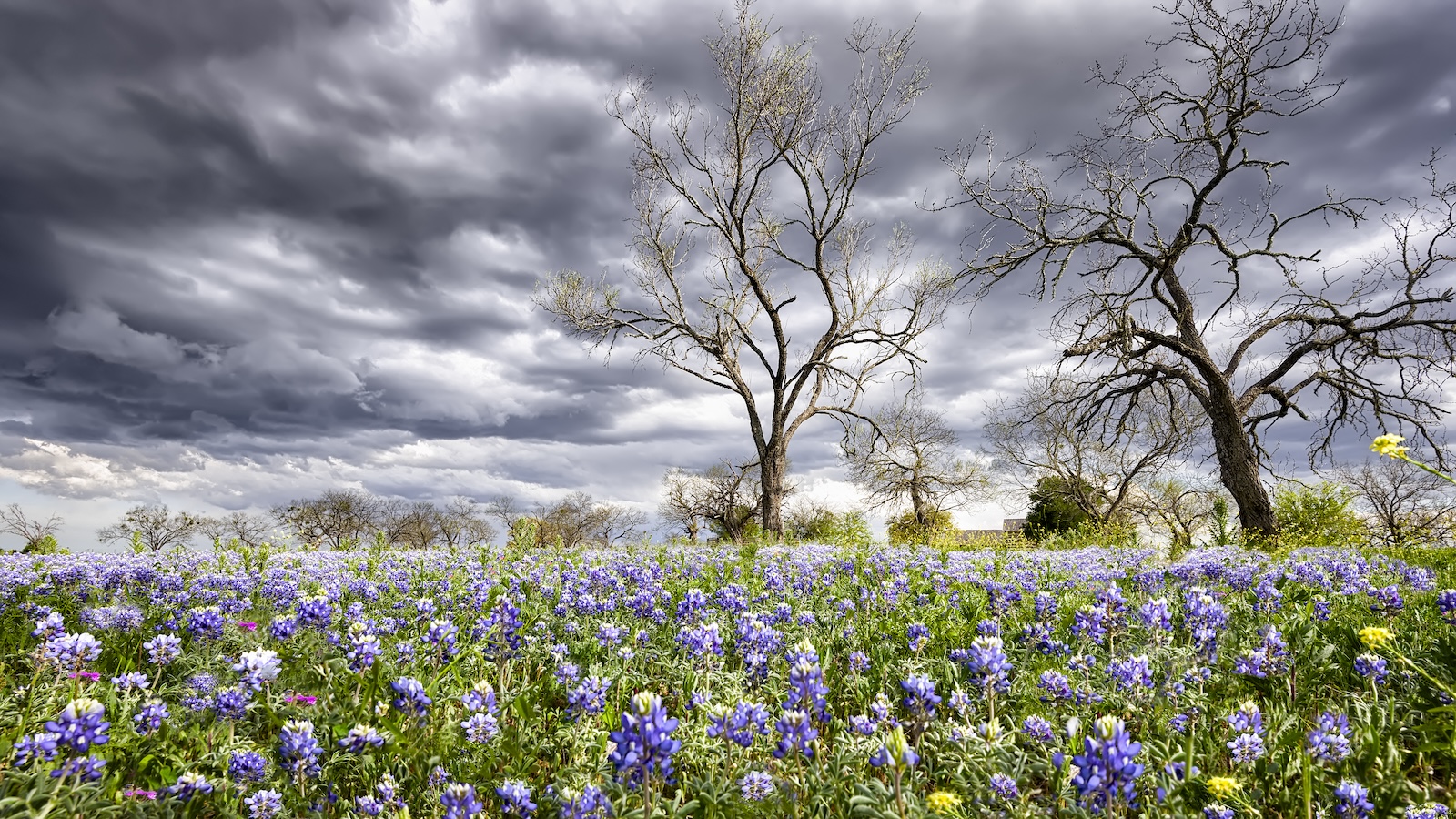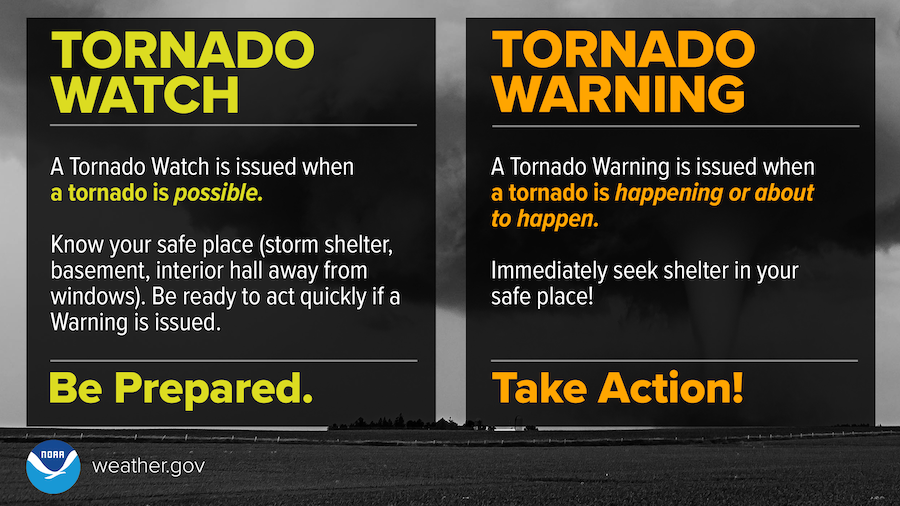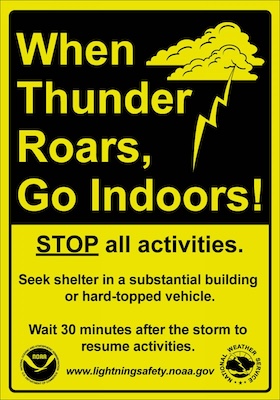Spring Storm Season Is Here: Stay Safe and Informed with Baylor Alert and State-of-the-Art Weather Tracking
Baylor’s Office of Emergency Management uses multiple tools and multi-tiered communications to keep campus informed during weather emergencies

(Photo Credit: Getty Images/Dean Fikar)
Contact: Shelby Cefaratti-Bertin, Baylor University Media & Public Relations, 254-327-8012
Follow us on Twitter: @BaylorUMedia
WACO, Texas (April 16, 2024) – The Office of Emergency Management within Baylor University’s Department of Public Safety (BUDPS) works hard to stay ahead of potential weather issues on or near campus through a strong partnership with the National Weather Service and early lightning detection with Earth Networks Lightning Alert System. When a severe weather watch or warning is in effect, including a tornado watch or warning, BUDPS quickly activates the multi-tiered Baylor Alert emergency notification system to alert the Baylor community on actions to take to stay safe from dangerous weather.
“As we enter the spring storm season, Central Texas may experience severe weather, including tornadoes,” said George Nuñez, director of emergency management at Baylor. “It is important for students, faculty, staff and visitors to be familiar with the Baylor Alert emergency notification system and emergency preparedness guidance for severe weather, particularly if the National Weather Service issues a tornado watch or tornado warning.”
“As we enter the spring storm season, Central Texas may experience severe weather, including tornadoes,” said George Nuñez, director of emergency management at Baylor. “It is important for students, faculty, staff and visitors to be familiar with the Baylor Alert emergency notification system and emergency preparedness guidance for severe weather, particularly if the National Weather Service issues a tornado watch or tornado warning.”
Baylor Alert
The Baylor Alert system provides important information and instructions for students, faculty, staff and visitors for all types of hazards, including severe weather. When additional information is available, BUDPS will share further instructions, such as “seek secure shelter immediately” or shelter-in-place.
Baylor Alert uses multiple avenues to communicate, including:
- Outdoor Warning Systems, which encompasses outdoor sirens and loudspeakers, which were recently upgraded to provide greater clarity and range;
- Indoor Notification Systems;
- Emergency Baylor Alert email and text messages;
- Audio message to a cellphone or other telephone;
- Official University websites and social media accounts at @BaylorUniversity1845 on Facebook, @Baylor on Twitter and @BaylorUniversity on Instagram; and
- Baylor Information Line at 254-710-4411.
“Any emergency message that we distribute using any of these systems provides clear instructions as to what incident it is and the next steps to take. Anyone on campus, even visitors, need to be aware of what to do in case of an emergency,” Nuñez said.
Students, faculty and staff are automatically opted in to receive Baylor Alert emergency notifications. Visitors can register to receive Baylor Alerts while on campus:
- Short-term visitors (1-3 days) can text Baylor1845 to 226787. *NOTE: Subscriptions automatically expire after three days.
- Long-term visitors (weeks, months, semester, etc.) can text Baylor76798 to 226787. *NOTE: Subscriptions do not automatically expire. Users need to opt-out to stop receiving notifications.
Tornado Watch vs. Tornado Warning
With a campus of more than 20,000 students, including more than 40% from outside of Texas, Understanding the difference between a tornado watch and a warning is critical, Nuñez said.
“A watch is when the atmospheric conditions are favorable for tornado activity, but a warning is when a tornado has been sighted or indicated by radar,” he said. “If a tornado warning is issued, it is important to quickly seek shelter indoors, away from doors and windows with smartphone access to follow additional notifications and information through the Baylor Alert system.”
It’s just as important to Be Weather Ready during spring storm season in Central Texas. Nunez encourages Baylor students, faculty and staff to discuss their emergency plans, review Baylor’s tornado safety procedure guide and take these advance actions:
- Check supplies, make sure your phone is charged and check the safe space in your home, apartment or residence hall.
- If you live in a Baylor residence hall, make sure you know where your Severe Weather Assembly Area is in your hall. These areas are identified on Building Emergency Plan maps throughout each building and also available via an online map.
- Be ready to act quickly if a warning is issued or you suspect a tornado is approaching.
Lightning detection
In addition to the Baylor Alert system, Baylor’s lightning alert system – in partnership with Earth Networks – consists of a lightning detector, audible tone and flashing strobe to alert individuals of lightning threats within an eight-mile radius. The automated outdoor alerting system for lightning covers various outdoor recreational and athletic locations.
The University monitors severe weather using three safety radiuses:
- 30 miles – Monitor storms and path;
- 15 miles – Prepare to take action;
- 8-miles - If lightning is detected within the eight-mile safety radius, any outdoor Baylor events taking place – including athletic events – are paused and the venue is cleared. The event can resume 30 minutes after the last lightning strike was detected within the eight-mile safety radius.
“Thunderstorms are powerful, and lightning is a significant threat,” Nuñez said. “A great reminder from the National Weather Service that we encourage on campus is ‘When Thunder Roars, Go Indoors!’"
To ensure all Outdoor Warning Systems are ready, Baylor joins city and county partners for regular joint testing of tornado sirens at 10 a.m. on the first Friday of each month. If there is a weather-related emergency – including a tornado warning where a tornado is imminent – Baylor, the city and county will activate their outdoor sirens to alert the public to take action to stay safe.
Additional information about emergency preparedness at Baylor is available on the Baylor Emergency Management website.
ABOUT BAYLOR UNIVERSITY DEPARTMENT OF PUBLIC SAFETY
The Baylor University Department of Public Safety serves as an umbrella department for the Baylor University Police Department, emergency management, global safety and security, technical security and parking and transportation. BUDPS is set on providing students, faculty and alumni with excellent security and safety through instant notification systems, extensive surveillance cameras and highly trained staff.
ABOUT BAYLOR UNIVERSITY
Baylor University is a private Christian University and a nationally ranked Research 1 institution. The University provides a vibrant campus community for more than 20,000 students by blending interdisciplinary research with an international reputation for educational excellence and a faculty commitment to teaching and scholarship. Chartered in 1845 by the Republic of Texas through the efforts of Baptist pioneers, Baylor is the oldest continually operating University in Texas. Located in Waco, Baylor welcomes students from all 50 states and more than 100 countries to study a broad range of degrees among its 12 nationally recognized academic divisions.

